Results 1 to 10 of 40
Threaded View
-
08-20-2019, 04:09 PM #1Senior Member

- Join Date
- Sep 2009
- Location
- Plymouth, UK
- Posts
- 313
Thanked: 19 Observations and request for pointers on hand sanding
Observations and request for pointers on hand sanding
I had a go at hand-sanding a blade, and I'm curious about the views of the board members on this topic.
I used this guide as a roadmap: https://shavelibrary.com/w/Hand_sanding_a_blade
This is where we started, I experimented with a generic blade of no particular value:
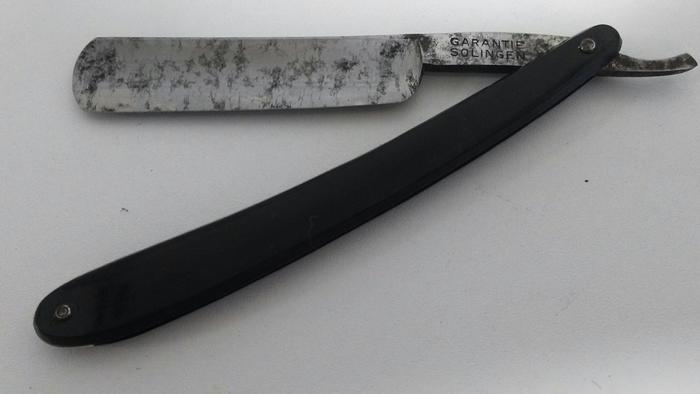
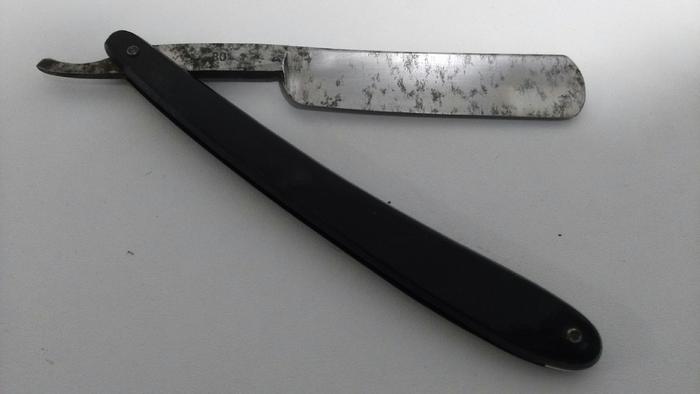
The blade looked quite badly stained, but pretty solid, so I thought it was a reasonable candidate for sanding. More on that later...
There was an etching, but obviously that was going to disappear:
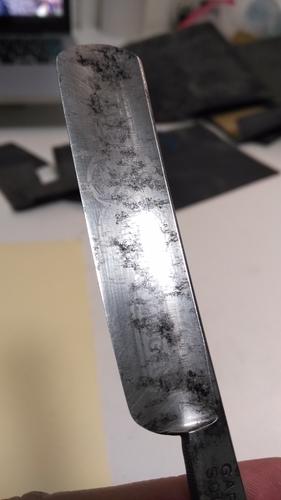
After many hours, this is the result:
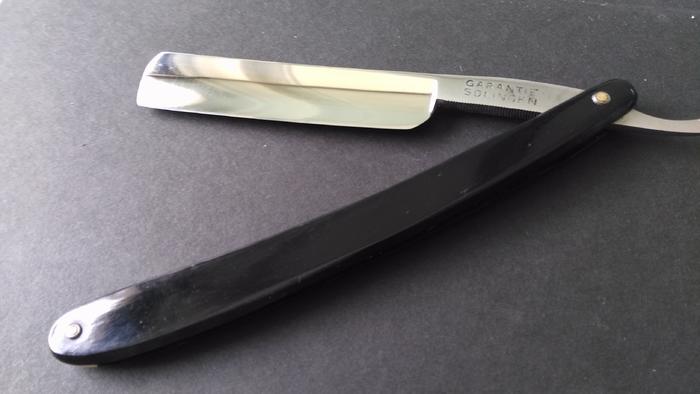
From a distance, it looks pretty good. First thing to say, damn, did it take a long time, at least 20+ hours. Those black stains covered pitting which just seemed to go down like rabbit holes. In the end, I decided it wasn't worth getting rid of absolutely all of the pitting, so there is still a tiny bit of visible pitting if you look very closely.
I used 120, 180, 240, 280, 320, 400, 600, (800), 1000, and 1200 grade wet and dry, and wrapped small pieces round an artificial wine cork. Even using 120 grit paper, some of the pitting wasn't budging at all, so I also resorted to an 80 grit flap wheel on the Dremel for the worst bits. I realised that though quick, this is a high-risk technique, and I would not use it on a razor of any value.
After sanding, I then polished with a green buffing compound on a felt Dremel wheel. This worked well, but after the first polish, I realised that I still had deep scratches, and went back to 400 grade paper and worked back up to 1200. Even so, there are still some visible scratches:
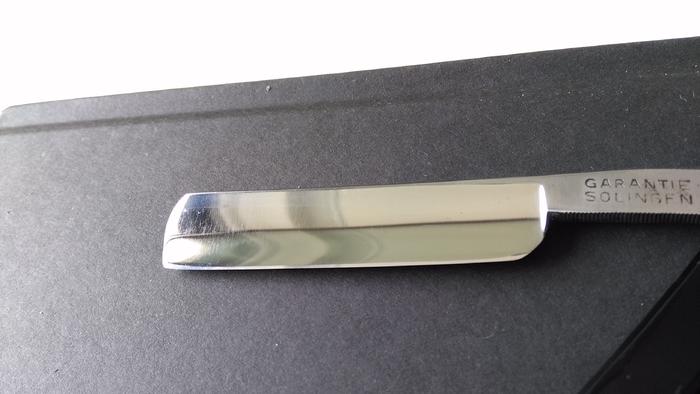
The razor looks reasonable, and so I didn't go back again to try to correct this. I also didn't sand the tang any further, I was starting to lose the lettering and the pitting was still very obvious, so I left it as was, and left the tang with a sanded unpolished finish.
I do have a few questions floating in my mind on which I'd appreciate the views of the members.
Firstly, how do you judge when to move on to the next grade of paper? Especially in the early stages, if you move on too early, you can get right to the end and realise that quite a few hours work have been in vain.
Secondly, to what extent do the members sand along the blade? The Wiki talks about this technique, and I used it with the heavier grades of abrasive, but it took forever to get the lengthwise scratches out. In the wiki, the author talks about alternating sanding lengthwise and across to make sure that you are ready to move to the next grit; I didn't do this, but might try it next time. How do others do it?
Thirdly, how do you deal with the jimps? I used a triangular needle file to remove the worst of the rust, then polished with the Dremel, but this did not clean the jimps perfectly.
And lastly, maybe the most important question, and the one with the most scope for discussion, when do you sand a blade, and when do you just clean it up and use it as is?
Many thanks!
-
The Following User Says Thank You to Montgomery For This Useful Post:
ScoutHikerDad (08-21-2019)


 90Likes
90Likes LinkBack URL
LinkBack URL About LinkBacks
About LinkBacks









 Reply With Quote
Reply With Quote